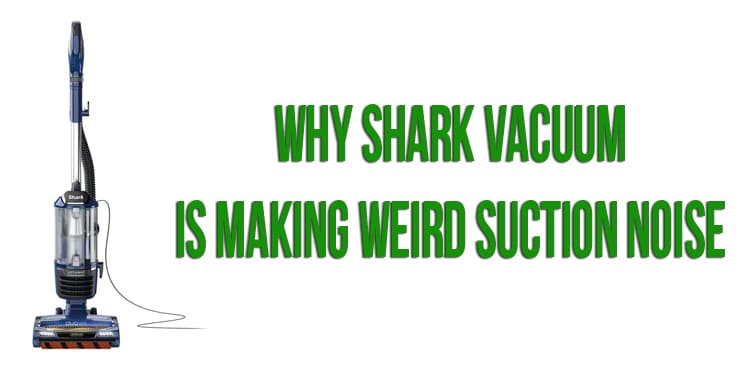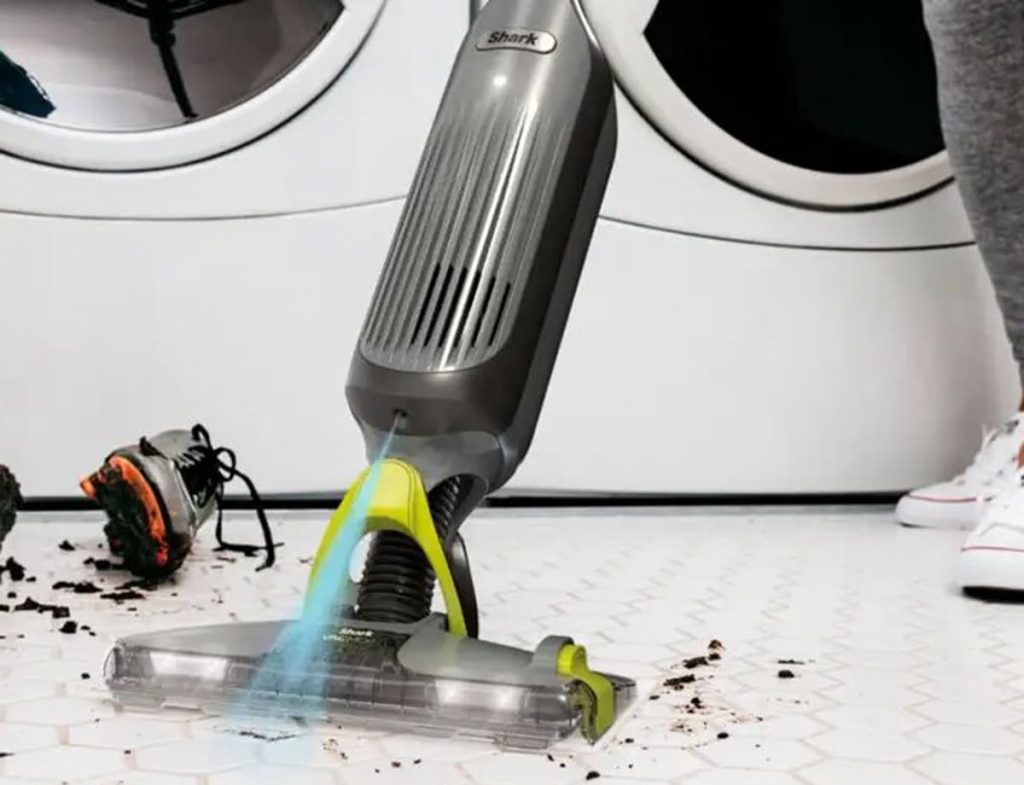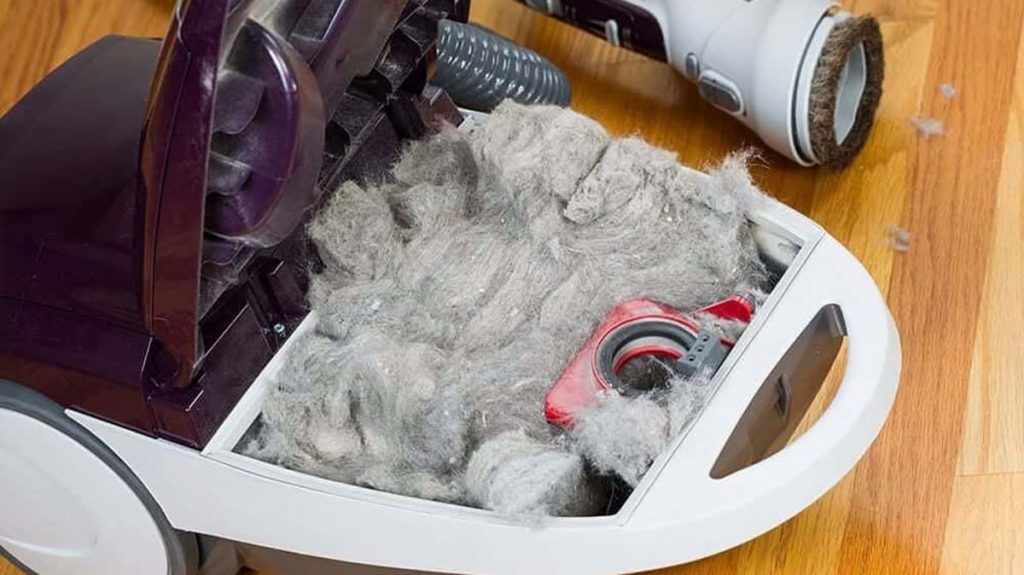If during the operation of the Shark vacuum cleaner you notice strange sounds coming from it, do not ignore them. They may indicate serious problems that will soon lead to a breakdown of the equipment.
Common sounds coming from a vacuum cleaner: rattle, whistle, rattle. A rattle indicates a problem with the motor, fan, or blockage. The rattling is caused by the ingestion of small solid objects. The whistle is caused by ruptures that cause air to leak, although small objects that get inside the bin also give similar symptoms.
Please note: if the whistle appeared during the cleaning process, most likely a small round object, such as a bead, got into the dust container. Under the influence of the driving force, it moves inside, and the sound occurs due to contact with the surface of the container. As soon as you turn off the vacuum cleaner, the sound disappears. When you turn it on, it will appear again. In this simple way, you can quickly determine what is the cause of the whistle.
If you decide to fix the problem yourself, be sure to unplug the vacuum cleaner from the mains. In the process of disassembling the parts, stack them alternately next to each other so that it is easy to reassemble in reverse order. For fasteners, prepare some kind of container and place it there so as not to lose it.
To make it easier to understand everything written, you need to understand the principle of the vacuum cleaner. Everything is simple here. When you vacuum, the air rushes in with the dust. There it passes through a container, a separator and a filter, where it is cleaned and exits. The draft is created by a fan driven by the engine.
Loud noise
If the vacuum cleaner suddenly makes a loud shrill noise, the cause is most likely due to clogged or damaged filters. They need to be cleaned periodically, but the owners of household appliances do not do this.
Airflow blockage
Clogging inside the vacuum cleaner is a common phenomenon. And it doesn’t matter what brand of household appliances. When the amount of dust becomes critical, the movement of air flows inside is blocked.
Another cause of blockage is the ingress of a large object that blocked the passage of air flows. An example is a sock or a rag. As the engine continues to run, trying to suck in air, the noise will increase due to the narrowing of the orifices.
Fix the problem by unblocking the air passages. Disconnect the nozzles, hose, check if they are clogged. Empty the dust container. If the sock is stuck inside the hose, take something strong and long and push it through. Removing blockages in the hose and telescopic tube is a simple task that every home appliance owner can handle.
Clogged or damaged filters
Filters also require attention. If they are clogged, air will not pass through them unhindered. There will be extraneous noise.
What filters are inside the vacuum cleaner:
- Inlet
- Premotor.
- High school graduation.
The air is cleaned at the inlet, in front of the engine, protecting it, and at the outlet. Check each of these filters to ensure that your vacuum cleaner is working properly.
To make it easier to understand the location of the filters and their removal, refer to the instruction manual for your vacuum cleaner model. After removing the filters, rinse them with warm water, removing accumulated dust, and leave for a day. Replace any worn filter with a new one.
Rattling
If the vacuum cleaner rattles, it is likely that something hard has got inside. Also, rattling sounds may indicate a broken belt in the engine. This problem is more serious. It is better to contact specialists who will change the belt.
Something hard inside
Powerful suction moves inside the container not only dust, but also any small objects scattered around the apartment. They begin to hang out inside, beat against the walls, causing the corresponding rattling or whistling sounds. Most often, paper clips, small balls, beads, elements of assembly products, etc. get inside the vacuum cleaner.
The problem is easily fixed. Disconnect the container, remove all debris from there, rinse with warm water and put it back.
Broken belt in the power head
Inside the vacuum cleaner, a small drive motor drives the brush roller using a rubber belt.
The belt is subjected to constant stress and wears out over time. When this happens, there is a rattling noise coming from the powerhead because the engine is still trying to crank it.
If the belt breaks, the brush will not rotate properly and will make a rattling sound. To fix the problem, you need to access the power head, remove the old belt and put a new one in its place. This is not easy to do, but you can try. If all else fails, contact competent specialists.
Whistling noise
The whistling sound is caused by round small objects getting inside or air leaking. In the latter case, the suction power is reduced.
Air leak
In normal operation, air is sucked in only through the designated areas. If somewhere the integrity of the surfaces is broken, there is an air leak and a corresponding whistling sound.
If you hear a whistle, inspect the telescopic tube and hose. Stretch it a little, look under good lighting. If there are cracks, replace the parts, although a crack in the plastic tube can be repaired with melted plastic or other tools. As a temporary measure, tape or tape in several layers is suitable.
Air leakage can also occur due to loose parts of the vacuum cleaner, such as a cover. The passage of air through the micro-holes causes a whistling sound. Make sure that the lid is tightly closed and that nothing is obstructing it.
Rattle
Inside every vacuum cleaner there are moving parts, such as the brush rollers in the power heads. If you hear a grinding noise coming from the vacuum cleaner, one of the moving parts is most likely stuck. You must identify the source of the noise and eliminate it.
With a rattle, owners of robotic vacuum cleaners often face. They capture dust with brushes that rotate and move in different directions. Sometimes they get entangled with clothing accessories, such as a tie, lace, sock, etc. This leads to a rattle.
Despite the interference, the moving parts of the vacuum cleaner will tend to move. If the problem is not corrected, the engine may fail because it overheats. It is necessary to carefully inspect the vacuum cleaner, and remove any interference that prevents the normal operation of household appliances.
Find out where the rattle is coming from, get closer to the vacuum cleaner and listen carefully. As soon as you understand where the sound is coming from, turn off the appliances and remove the object that is the source of extraneous noise. If you cannot do this, remove the parts around the place where the jamming occurred and remove foreign objects.
The manufacturer of household appliances usually indicates in the instructions what is the cause of this or that noise. Read the manual and follow the advice given there. If you have done all of the above, but the extraneous sound has not gone away, take the vacuum cleaner to a service center for diagnostics. They will quickly find the cause and remove it. You can use your favorite vacuum cleaner again.
A few last tips:
- Before each use, inspect the vacuum cleaner for damage.
- Use the vacuum cleaner only for its intended purpose, store in a specially designated place, operate in accordance with the manufacturer’s requirements. It is not allowed to use the vacuum cleaner with hard, sharp, large objects, large volumes of dust, construction debris.
- Heard an extraneous sound – stop, try to understand the source of the sound, take measures to restore the normal operation of household appliances.
- Do not use the vacuum cleaner without dust bags, filters and brush roller.
- Avoid the accumulation of lint, dust, hair, which will clog the holes.
- Do not use the vacuum cleaner if the airflow is restricted.
Follow the manufacturer’s requirements, and you will avoid the appearance of extraneous sounds by 90%.






